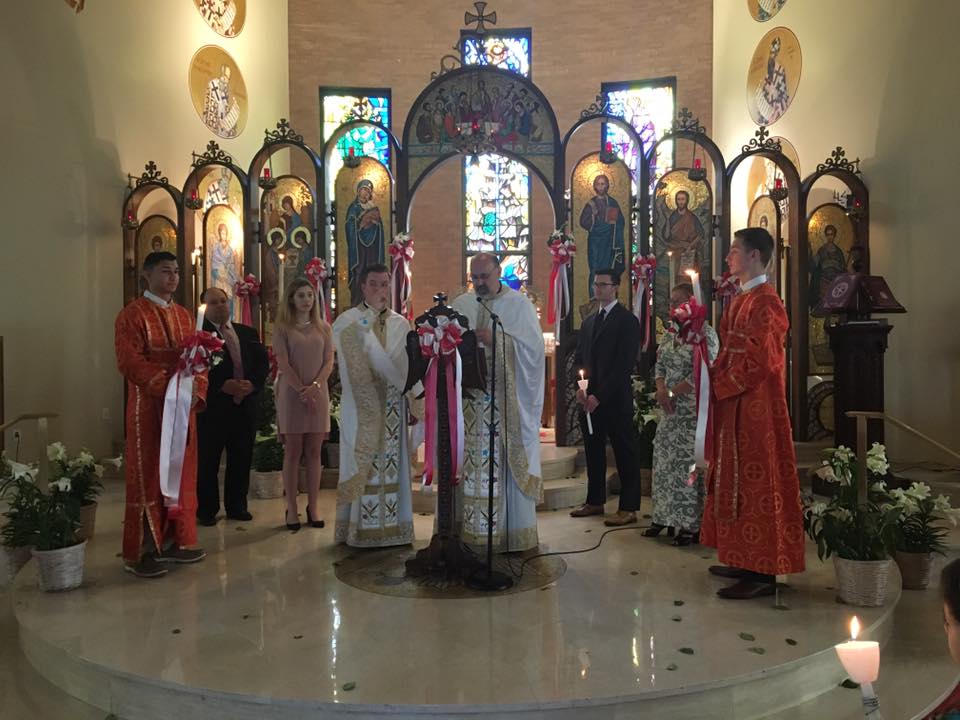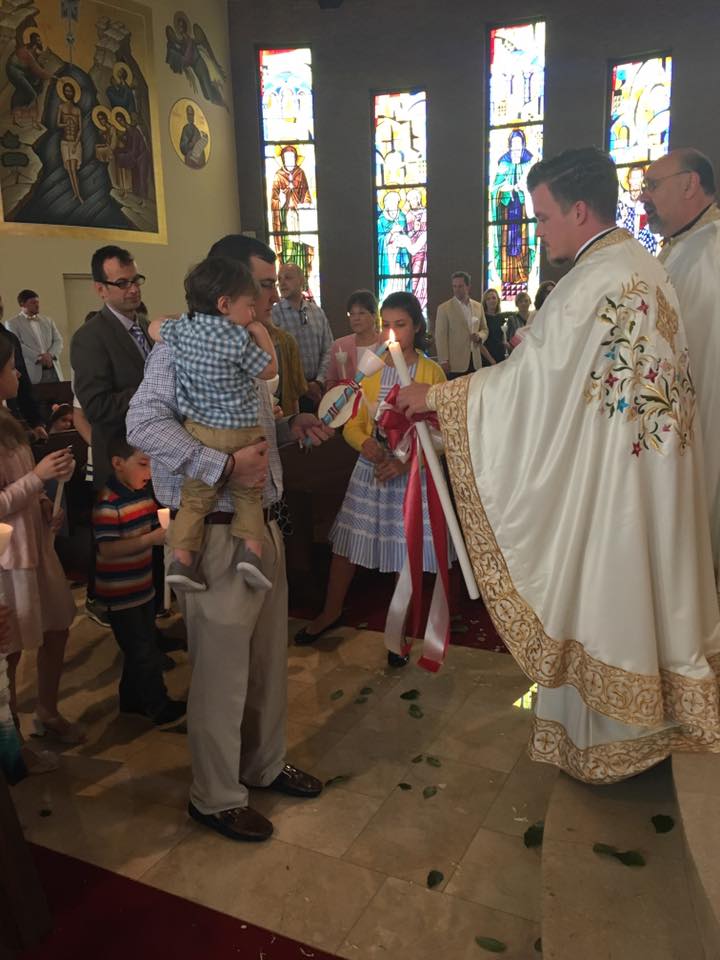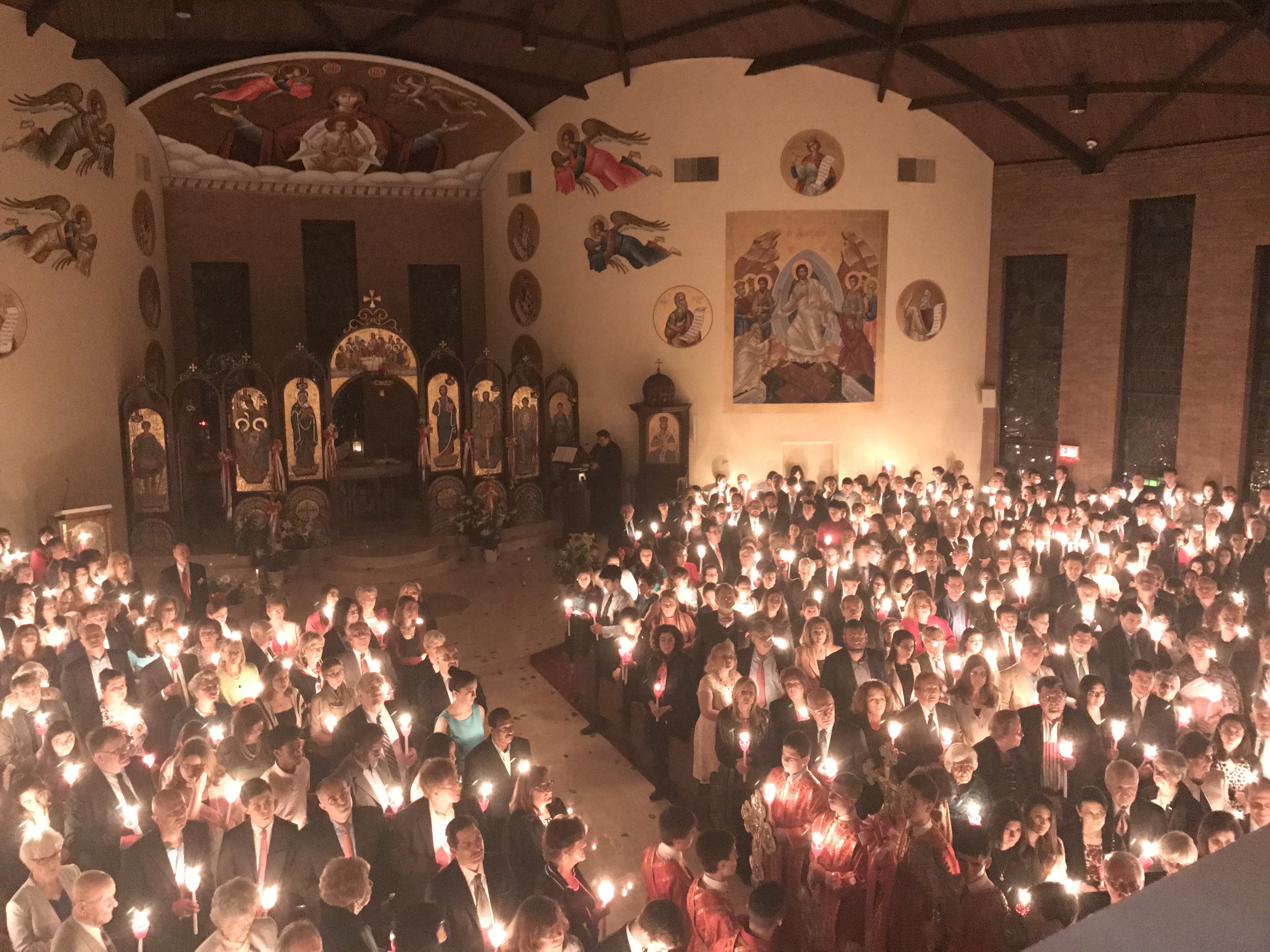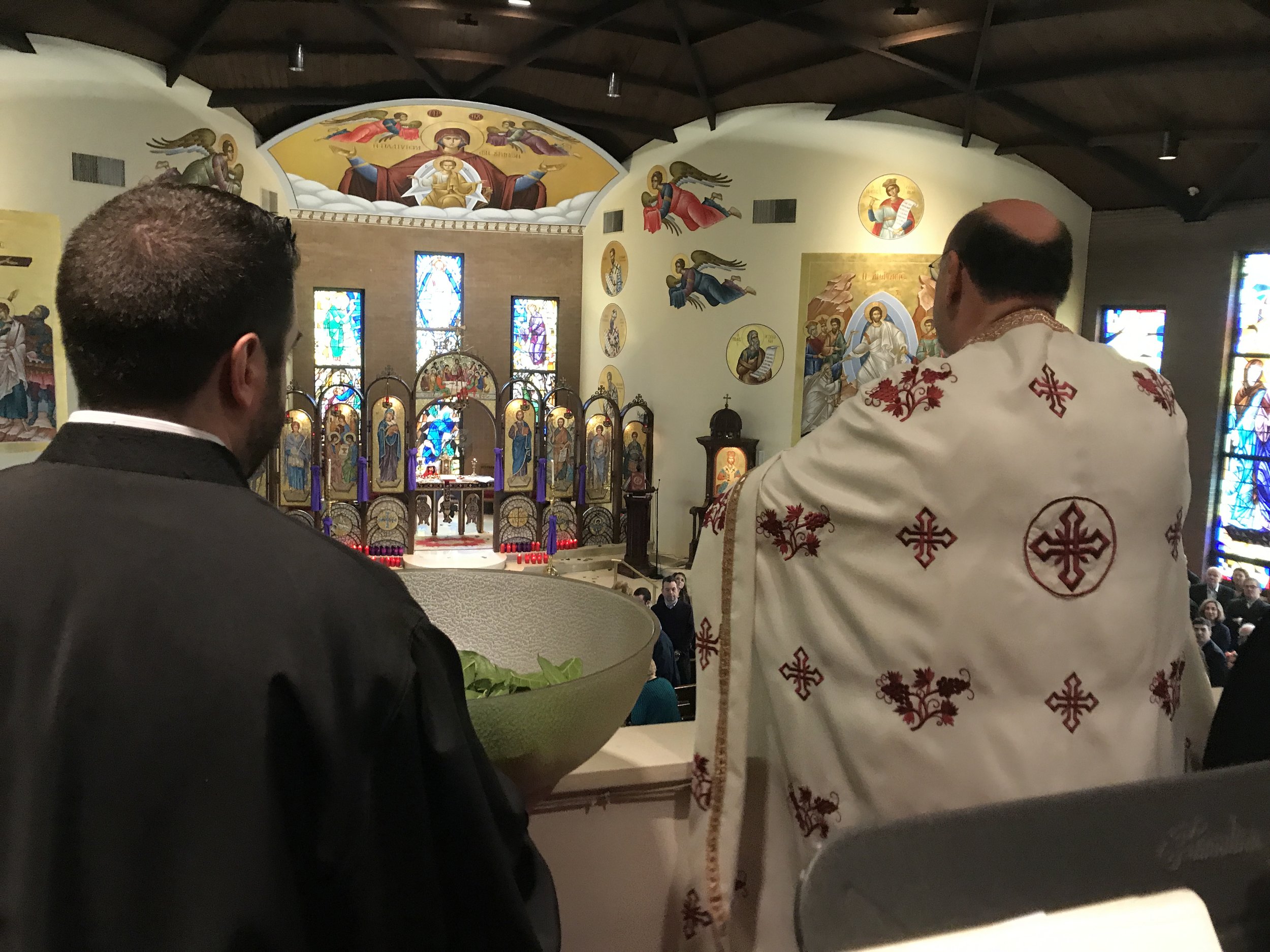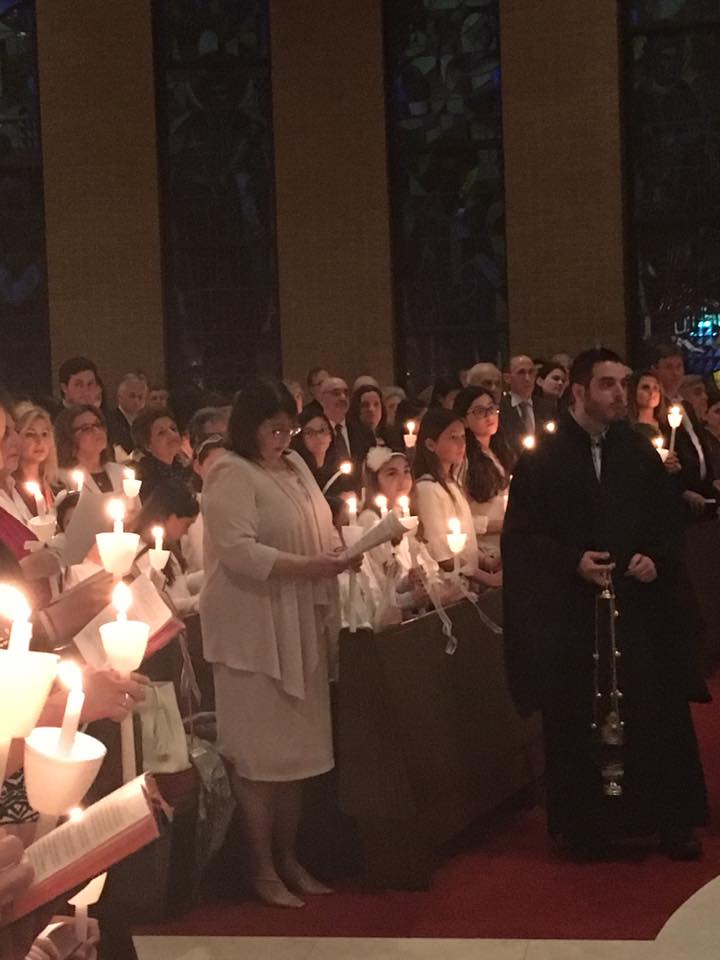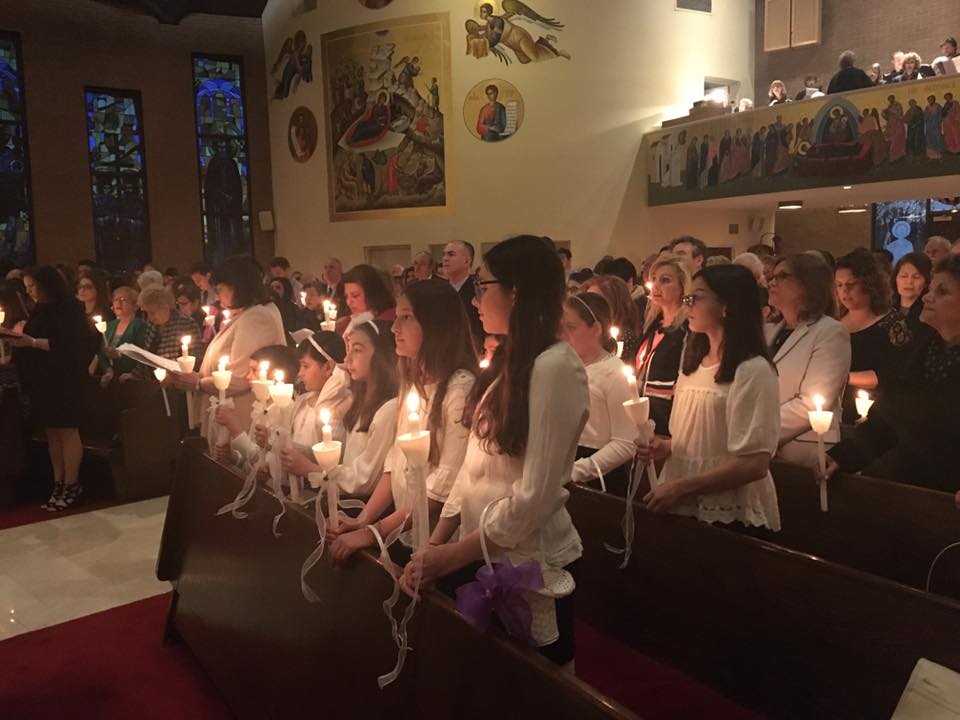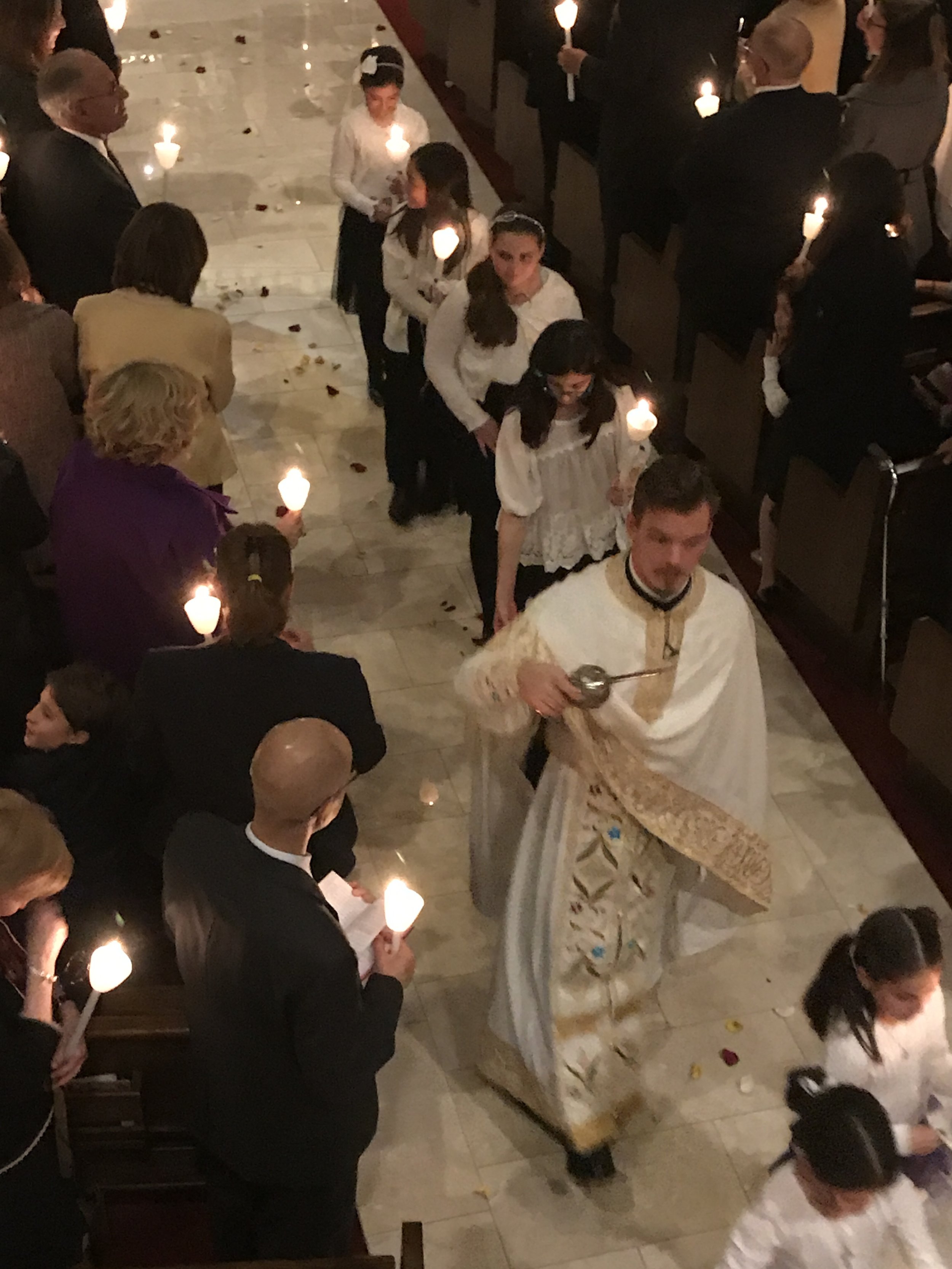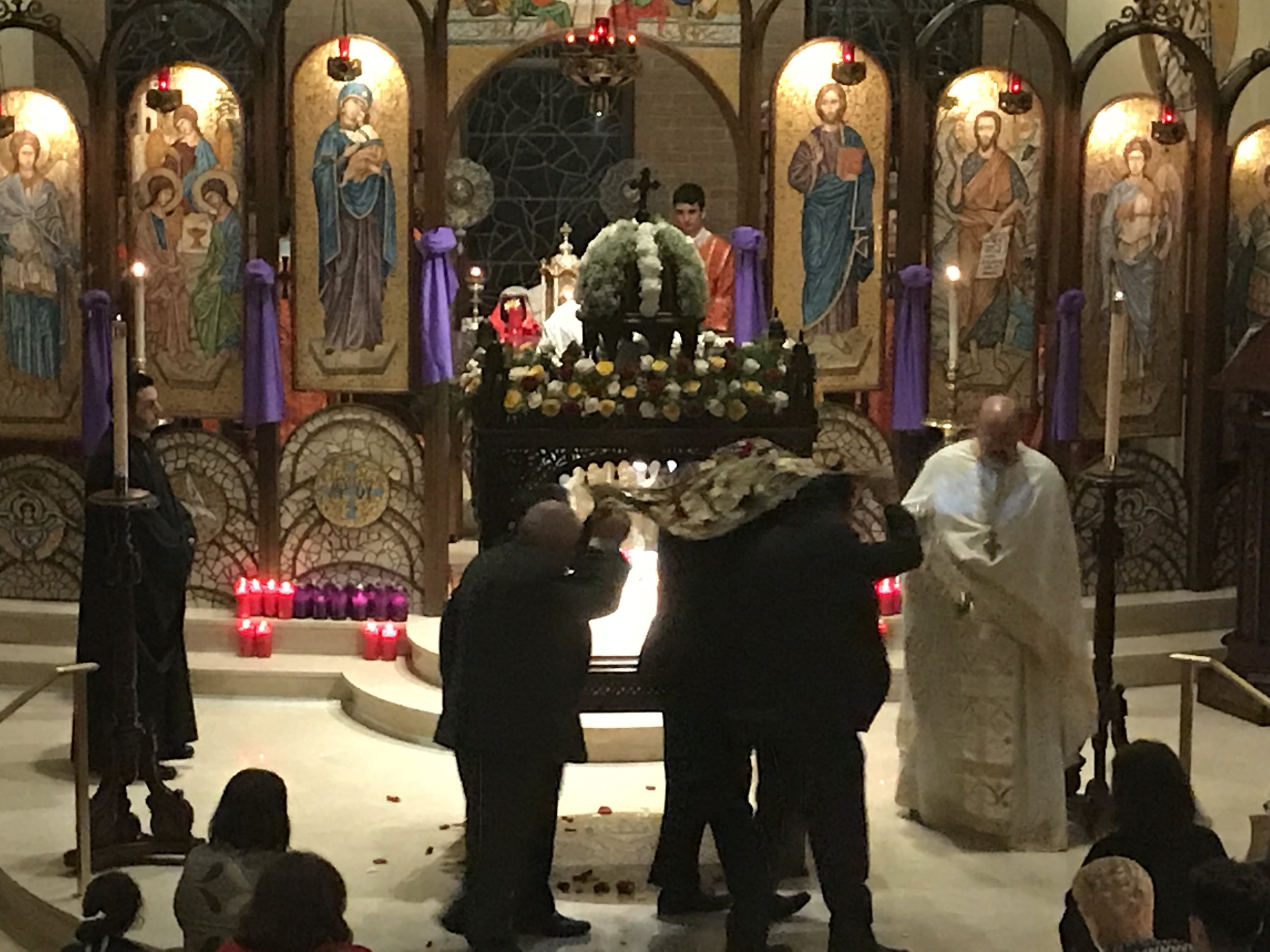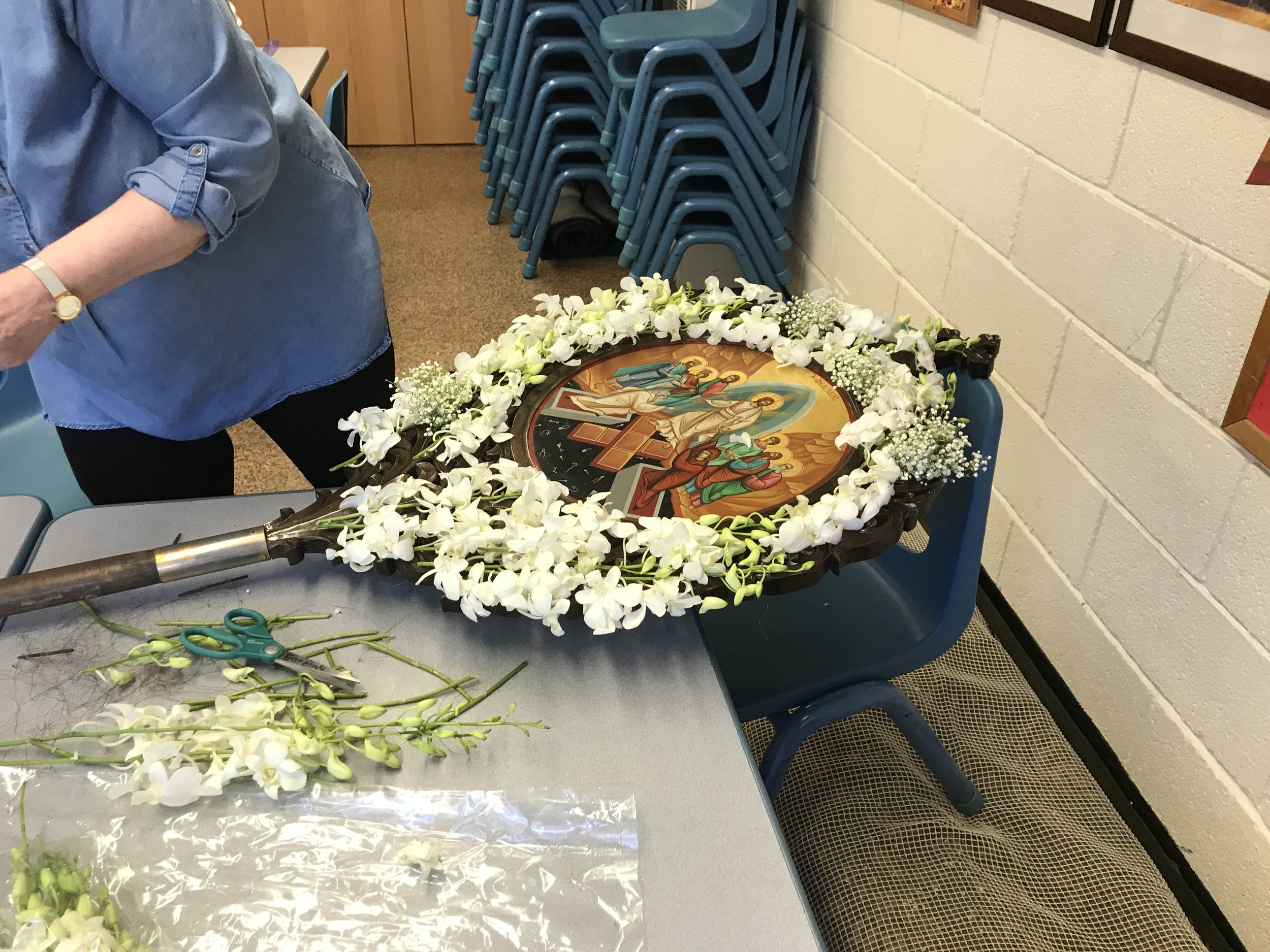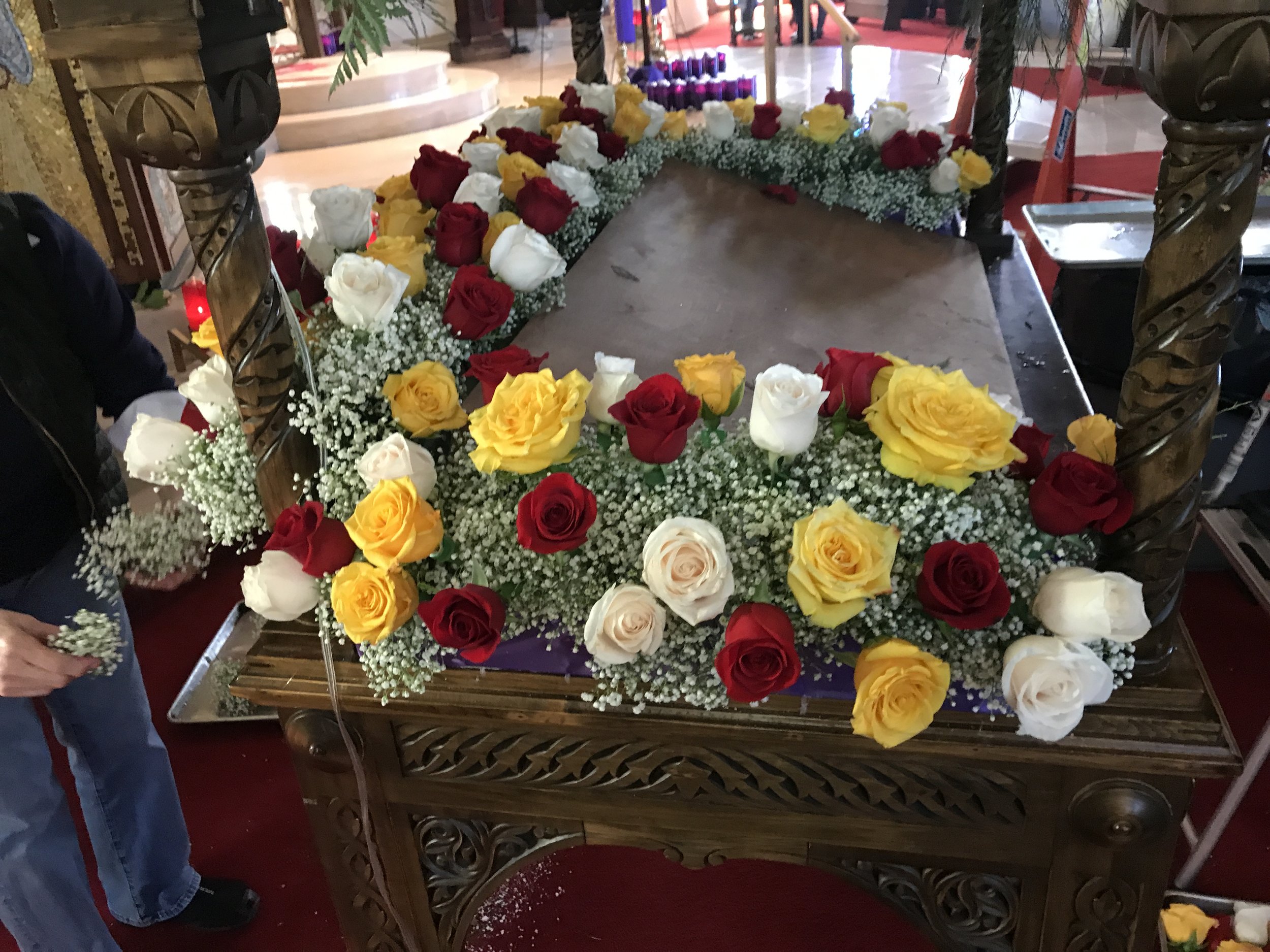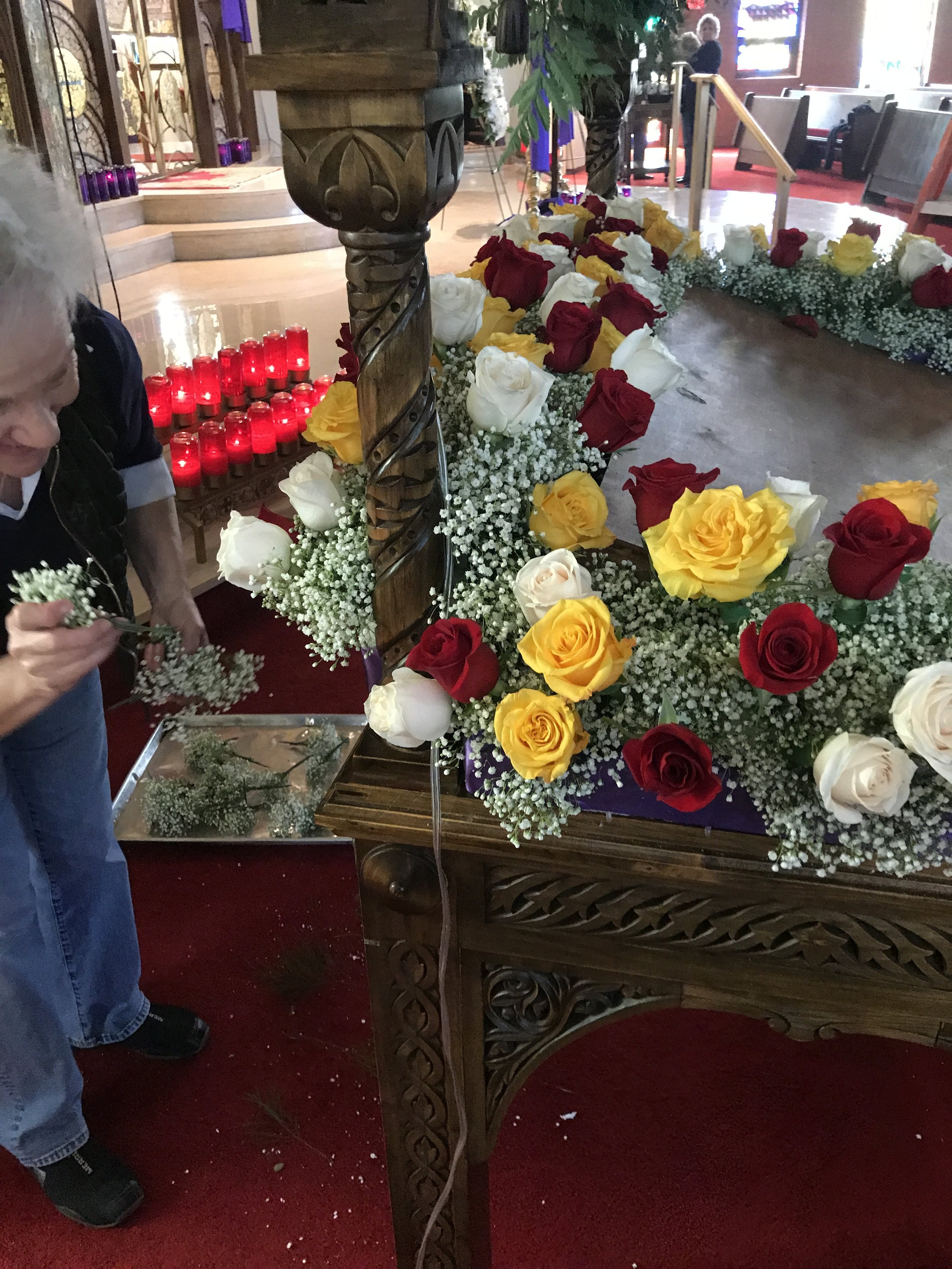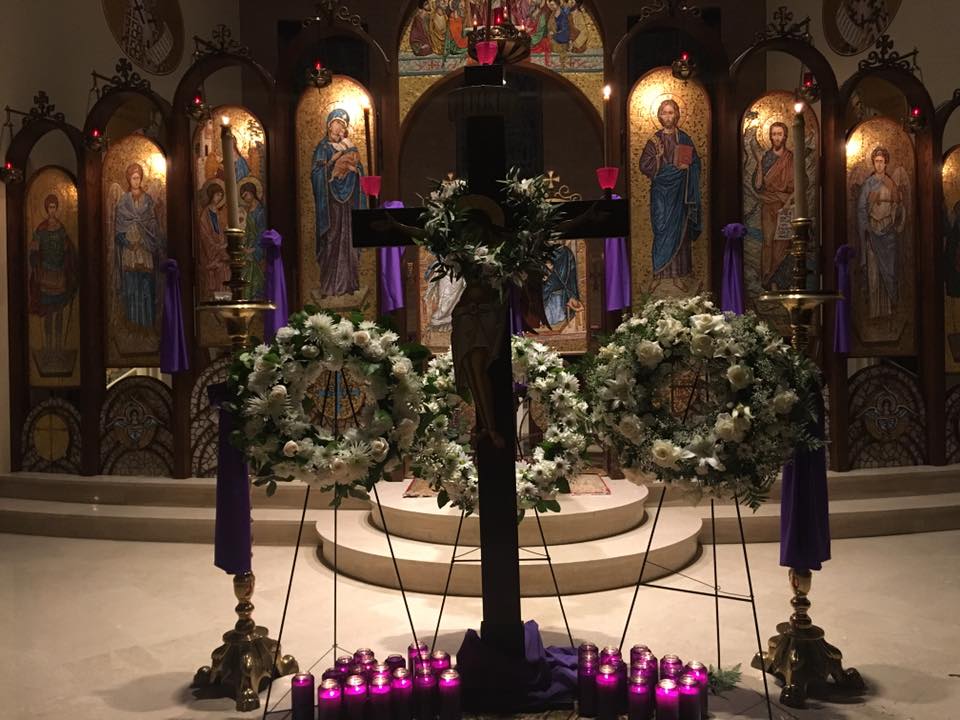Sunday Highlights: Χριστός Ανέστη
Significance of this Service
Source: Goarch.org
"Peace be unto you..."
Easter Sunday afternoon, the faithful gather once more for prayer with lighted candles. All sing the hymn, "Christ is Risen from the Dead." The people greet one another joyously, saying: "Christ is Risen," the Easter salutation which is answered, "Truly He is Risen." They sing, "The dark shadows of the Law have passed away by the coming of grace," and standing in exaltation, they exclaim, "Who is so great a God as our God?"
The Gospel according to John (20:19-25) is read in various languages, proclaiming the Good News of Resurrection all over the universe without discrimination. The fruit of faith in the Resurrection of the Lord is love in His Name; therefore, this day is called "Sunday of Agape" (love feast), a day dedicated to Christian principles, especially to forgiveness and charity. At this time, Christians seek to end misunderstanding and arguments among those with whom they may be at odds. Apostle Paul firmly interprets the Resurrection of Christ, saying: "If Christ has not been raised, then our preaching is in vain and your faith is in vain." (1 Cor. 15:14) The Church also states in its Creed, "The Third day He rose again."
A Living Faith
Remembrance of the events of the last week in the life of Jesus Christ has a practical appeal to the heart of the Christian believer. One's beliefs constitute his being; the more our beliefs are true and firm, the more purposeful meaning life has. The Resurrection of Christ strengthens and illuminates our beliefs; this is our being. It is not only a belief in a historical fact which took place in a certain place and time, but it is marvelous in its nature. The Resurrection of Christ in relation to His Crucifixion and Mystic Supper continue to be present in the mind of the believer as a fact, as well as the source of "the power from above," for which the believer prays. Assurance of a personal participation in the enactment of the same events in the life of Christ becomes an unfaded happiness for the Christian.
This is the divine inheritance that the Church of Christ keeps as its treasure and solid foundation. The goal of a member of the Church is to keep his faith living and working in his everyday life and relations with others. The Christian will be recognized and identified as the friend and disciple of Jesus Christ. His beliefs will be like the flag which flies from the top of the centermost of his own ship, sailing to its divine destiny. The flag's inscription bears the assurance that "Christ is Risen, Indeed."
Easter Sermon
"If any be pious and a lover of God, let him take part in this fair and radiant festival. If any be an honest servant, let him come in and rejoice in the joy of his Lord. If any have wearied himself with fasting, let him take part now in the recompense. If any have worked from the first hour, let him receive today his just dues. If any have arrived at the sixth, in no wise feast with thankfulness. If any have arrived at the sixth, in no wise let him be in doubt; in no way shall he suffer loss. If any arrive only at the eleventh, let him not be fearful for his slowness.
For the Master is munificent, and receives the last even as the first. He giveth rest to him of the eleventh, even as to him who has wrought from the first hour. And He is merciful to the last, and provides for the first. And to this one He gives, and to that one He shows kindness. And He receives their labours, and acknowledges the purpose. And he honours the action and praises the intention.
Wherefore enter ye all into the joy of our Lord, and let the first and the second take part in the reward. Ye rich and ye poor, join hands together. Ye strong and ye heedless, do honor to this day. Ye who fast and ye who fast not, be glad today. The table is full: do ye all fare sumptuously. The calf is ample: let no one go forth unsatisfied.
Let all take part in the banquet of Faith. Let all take part in the wealth of Righteousness. Let no one lament for poverty, for the Kingdom is made manifest for all. Let no one bewail transgressions, for forgiveness has dawned from the tomb. Let no one be fearful of Death, for the death of the Savior has set us free. He has quenched it by being subdued by it.
He Who came down into Hades despoiled Hades; and Hades was embittered when it tasted of His Flesh. Isaiah, anticipating this, cried and said: Hades was embittered when below it met Thee face to face. It was embittered for it was rendered void. It was embittered for it was mocked. It was embittered for it was slain. It was embittered for it was despoiled. It was embittered for it was fettered. It received a Body, and encountered God. It received mortal dust, and met Heaven face to face. It received what it saw, and fell whither it saw not.
O Death, where is thy sting? O Hades, where is thy victory? Christ is risen and thou are overthrown. Christ is risen and the demons have fallen. Christ is risen and the Angels rejoice. Christ is risen and there is none dead in the tomb. For Christ is raised from the dead, and become the first-fruits of them that slept. To Him be glory and power from all Ages to all ages. Amen."
St. John Chrysostom
Holy Week Highlights: Holy Saturday Evening
Holy Saturday Evening
Minutes prior to the Resurrection of our Lord and Saviour, William DeKnatel was confirmed into the Greek Orthodox Faith by Frs. Nick and Patrick. His sponsors are Stavros and Toulouse Maravegias. AXIOS!
Significance of this Service
Source: Goarch.org
(The service is Matins and Divine Liturgy of Sunday morning sung Saturday midnight. With this service, the Pentecostarion starts (50 days services).
On Easter Sunday (Saturday midnight), the life-giving Resurrection of our Lord and Savior Jesus Christ is celebrated. Before midnight, the Odes of Lamentation of the previous day are repeated. The Orthros of the Resurrection begins in complete darkness. The priest takes light from the vigil light and gives it to the faithful, who are holding candles. The priest sings: "Come ye and receive light from the unwaning life, and glorify Christ, who arose from the dead," and all the people join him in singing this hymn again and again. From this moment, every Christian holds the Easter candle as a symbol of his vivid, deep faith in the Resurrection of Jesus Christ as Savior. In many churches, the priest leads the people outside the church, where he reads the Gospel which refers to the Angel's statement: "He is Risen; He is not here." (Mark 16:1-8)
Then comes the breathless moment as the people wait for the priest to start the hymn of Resurrection, which they join him in singing, repeatedly: "Christ has Risen from the dead, by death trampling upon Death, and has bestowed life upon those in the tombs." From this moment, the entire service takes on a joyous Easter atmosphere. The hymns of the Odes and Praises of Resurrection which follow are of superb meaning and expression. The people confess, "It is the Day of Resurrection, let us be glorious, let us embrace one another and speak to those that hate us; let us forgive all things and so let us cry, Christ has arisen from the dead." By this hymn, they admit that love of one's fellowman is the solid foundation of the faith in the Resurrection of Christ.
The Divine Liturgy of St. John Chrysostom is then officiated. At the end of the Liturgy, a part of the marvelous festival sermon of St. Chrysostom is read, which calls upon the people to "Take part in this fair and radiant festival. Let no one be fearful of death, for the death of the Savior has set us free...O Death, where is thy sting? O Hades, where is Thy victory? Christ is Risen and Thou art overthrown. To Him be glory and power from all ages to all ages."
The readings are Acts 1:1-8 and John 1: 1-17.
Holy Week Highlights: Holy Saturday Morning
Significance of this Service
Source: Goarch.org
"Arise, O God, and judge Thou the earth..."
(The service is Vespers and Divine Liturgy of Saturday evening sung by anticipation, on Saturday morning.)
Psalms are read and Resurrection hymns are sung which tell of Christ's descent into Hades. "Today Hades cried out groaning" is the hymn's description of the resurrection of Adam and the conquering of death. Thus this day's celebration is called "First Resurrection." Most of the readings of this day are from the Old Testament on the prophecies and promise of the conquering of death. On this day, the Divine Liturgy of St. Basil is officiated. Apostle Paul exhorts the faithful: "We were buried, therefore, with him by baptism unto death, so we, too, might walk in newness of life." (Romans 6:4)
After the reading of the Epistle, the priest follows the custom of tossing of laurel, saying: "Arise, O God, and judge Thou the earth: for Thou shall take all heathen to Thine inheritance." The Cherubic hymn of this day is: "Let all mortal flesh keep silence and stand with fear and trembling...", a thoughtful hymn of adoration and exaltation. The Divine Liturgy ends with the Communion Hymn: "So the Lord awaked as one out of sleep, and He is risen to save us."
The readings are from Romans 6:3-11 and Matthew 28:1-20.
Holy Week Highlights: Good Friday Evening
Significance of this Service
Source: Goarch.org
"Do not weep for me, but weep for yourselves..."
(The service is Matins of Saturday morning sung by anticipation, on Friday evening.)
It consists of psalms, hymns, and readings dealing with the death of Christ, in contrast to His divinity, and in expectation of His Resurrection. One of the hymns relates: "He who holds all things is raised up on the Cross and all creation laments to see Him hang naked on the Tree." The thoughtful and well-written Odes, sung by the choir, compare the Compassion of God and the cruelty of man, the Might of God and the moral weakness of man. The Odes picture all Creation trembling when witnessing its Creator hung by His own creatures: "Creation was moved...with intense astonishment when it beheld Thee hung in Golgotha." The Odes remind us of the vision of Isaiah, who saw Christ, "the unwaning light of the manifestation," and cried aloud, "The dead indeed shall arise and all those on earth shall rejoice." During this service, the Body of Christ is carried in procession around the church. In some parishes, the entire flower-bedecked Sepulcher, symbolizing the Tomb, is carried in the procession.
The entire congregation joins in singing the three parts of the "Hymns of Praise" (there are approximately 300 hymns, but only a few are sung). After these hymns are sung, the priest sprinkles the Sepulcher and the whole congregation with fragrant water. There is a simultaneous praise of both the Crucifixion and Resurrection of Christ with their purpose of the redemption of man. We no longer lament the sufferings of the Crucified One; we now lament chiefly for our own sins because we are far from God. So these services should have a rather personal meaning of repentance and of strong faith in God.
Christians observe Good Friday with fasting, prayer, cleanliness, self-examination, confession, and good works, in humility and repentance so that the Grace of the Cross might descend upon them.
The Gospel reading is Matthew 27:62-66.
Holy Week Highlights: Good Friday Afternoon
Significance of this Service
Source: Goarch.org
"Father, forgive them for they know not what they do..."
(The service is Vespers sung on Friday afternoon.)
The Vespers of Friday afternoon are a continuation of the Royal Hours. During this service, the removal of the Body of Christ from the Cross is commemorated with a sense of mourning for the terrible events which took place. Once more, excerpts from the Old Testament are read together with hymns, and again the entire story is related, followed by the removal from the Cross and the wrapping of the Body of Christ with a white sheet as did Joseph of Arimathea. Apostle Paul, interpreting the dreadful event, exhorts the Church: "For the word of the cross is folly to those who are perishing, but to us who are being saved it is the power of God...we preach Christ crucified...the power of God and the wisdom of God." (1 Cor. 1: 18f.)
As the priest reads the Gospel, "and taking the body, Joseph wrapped it in a white cloth," he removes the Body of Christ from the Cross, wraps It in a white cloth, and takes It to the altar. The priest then chants a mourning hymn: "When Joseph of Arimathea took Thee, the life of all, down from the Tree dead, he buried Thee with myrrh and fine linen...rejoicing. Glory to Thy humiliation, O Master, who clothest Thyself with light as it were with a garment." The priest then carries the cloth on which the Body of Christ is painted or embroidered around the church before placing It inside the Sepulcher, a carved bier which symbolizes the Tomb of Christ. We are reminded that during Christ's entombment, He descends into Hades to free the dead of the ages before His Incarnation.
The Gospel readings which relate these events are: Matt. 27:1-38; Luke 23:29-43; Matt. 27:29-54; John 19:31-37; Matt. 27:55-61. Good Friday is the only day in the year on which the Divine Liturgy is not officiated.
Today, the devoted Christian ponders in his heart the deep meaning of the Seven Last Words of Christ uttered on the Cross, the first Divine Pulpit of Christianity.
Holy Week Highlights: Good Friday Morning
Good Friday Morning
The Holy Trinity Community comes together to prepare our church for the Good Friday Services.
Significance of the Royal Hours
Source: Goarch.org
"They cast lots upon my vesture..."
According to the Hebrew custom, the "Royal Hours," four in number, are read at this time. These services consist of hymns, psalms, and readings from the Old and New Testaments, all related prophetically and ethically to the Person of Christ. In some churches, the "Hours" are read in the afternoon, before the Vesper services.
Holy Week Highlights: Holy Thursday Evening
Significance of this Service
Source: Goarch.org
"We worship Thy passion, O Christ..."
(The service of the HOLY PASSION of our Lord Jesus Christ. The service is Matins of Friday morning sung by anticipation, on Thursday evening.)
Good Friday celebrates the holy, saving, and awesome Passion of Christ. To take away our sins, Christ willingly endured spitting, scourging, buffeting, scorn, mocking, and purple robe; the reed, sponge, vinegar, nails, spear, and above all, the Cross and Death. The confession from the cross of the penitent thief, crucified with Christ, is celebrated. This service is long, but its content is dramatic and deeply moving for the devout Christian. Participation in the prayers and the historical sequence of the events, as related in the Gospels and hymns, provides a vivid foundation for the great events yet to come. Following are the references of the "Twelve Gospel" readings of this service
- St. John 13:31 thru Ch. 18:1
- St. John 18:1-29
- St. Matthew 26:57-75
- St. John 18:28 thru Ch. 19:16
- St. Matthew 27:3-32
- St. Mark 15:16-32
- St. Matthew 27:33-54
- St. Luke 23:32-49
- St. John 19:38-42
- St. Mark 15:43-47
- St. John 19:38-42
- St. Matthew 27:62-66
These readings relate the last instructions of Christ to His disciples, the prophecy of the drama of the Cross, the dramatic prayer of Christ and His new commandment. The day should be devoted to reading the "Gospel of the Testament" of Christ which He left for all men. The Church services during Holy Week re-enact the events of this Gospel.
After the reading of the fifth Gospel comes the procession with the Crucifix around the church, while the priest chants the 15th antiphon: "Today is hung upon the Tree, He Who did hang the land in the midst of the waters. A Crown of thorns crowns Him Who is King of Angels. He is wrapped about with the purple of mockery Who wrapped the Heavens with clouds. He received buffetings Who freed Adam in Jordan. He was transfixed with nails Who is the Bridegroom of the Church. He was pierced with a spear Who is the Son of the Virgin. We worship Thy Passion, O Christ. Show also unto us thy glorious Resurrection."
During the Procession, the faithful Christian kneels and prays for his spiritual welfare, imitating the thief on the Cross who confessed his faith and devotion to Christ. He then approaches and reverently kisses the Crucifix.










